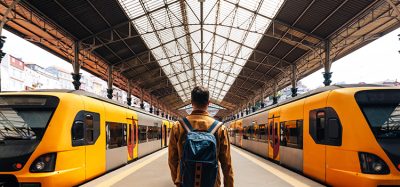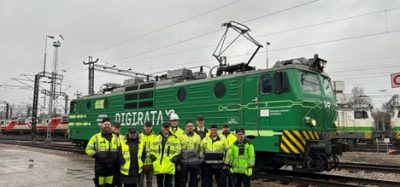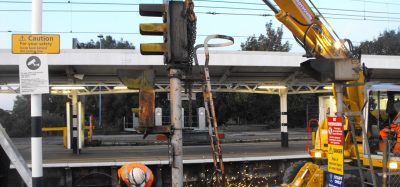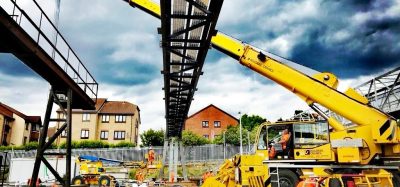Working towards an ERTMS maintenance regime
Posted: 1 August 2008 | | No comments yet
The implementation of ERTMS will have a serious impact on the maintenance processes of Rail Infrastructure Managers, Carriers and Maintenance Contractors. A pro-active attitude of the involved parties can minimise teething troubles and contribute to the success of the Europe-wide introduction of ERTMS. Clear agreements as to the procedures and responsibilities at a European level will have to be made at short notice.
The implementation of ERTMS will have a serious impact on the maintenance processes of Rail Infrastructure Managers, Carriers and Maintenance Contractors. A pro-active attitude of the involved parties can minimise teething troubles and contribute to the success of the Europe-wide introduction of ERTMS. Clear agreements as to the procedures and responsibilities at a European level will have to be made at short notice.
The implementation of ERTMS will have a serious impact on the maintenance processes of Rail Infrastructure Managers, Carriers and Maintenance Contractors. A pro-active attitude of the involved parties can minimise teething troubles and contribute to the success of the Europe-wide introduction of ERTMS. Clear agreements as to the procedures and responsibilities at a European level will have to be made at short notice.
Three ERTMS projects are currently ongoing in the Netherlands, totalling a combined length of over 820 kilometres of single track railway: The Betuweroute, featuring an Alstom system, the HSL-Zuid from Amsterdam to Antwerp, equipped with a Siemens system, and the Amsterdam-Utrecht four-track line, which is currently being fitted with a Bombardier system.
The Amsterdam-Utrecht line features two different systems, namely ERTMS and the classic ATB signalling system used across the entire Dutch railway network. Normal trains run on the old system. When an ERTMS train passes through, this system is automatically activated and all light signals switch to white. The HSL-Zuid and Betuweroute are 100% ERTMS-based and have no longer been equipped with signals.
The ERTMS systems on these lines are not fully operational at present. The problems they are experiencing are the same as those encountered throughout the rest of Europe. Like any other electronic system, ERTMS is subject to constant updates based on new insights and developments. In addition, ERTMS is provided by six different suppliers. As a result, the equipment in the train is not necessarily provided by the same supplier as the equipment in the track. What is more, the neighbouring track equipment may be delivered by yet another supplier, which causes a great deal of technical fine-tuning.
Separate maintenance organisation
As a full-service maintenance contractor Strukton Rail has been eager to be involved in ERTMS from the very start. Previous safety systems such as EBS and VPI had already taught that the introduction of an electronic system is a complex affair, showing a great deal of system failures and uncertainty about who was responsible for solving them because no clear agreements had been made between the supplier and the maintenance contractor. Strukton Rail therefore recognised that this must be done differently when it comes to ERTMS. The company worked close together with the Dutch network manager ProRail and system supplier Bombardier in the early stages. This enabled them to get involved, rather than have a new, unfamiliar system dropped in their lap from one day to the next.
In anticipation of what was to come, a major, Europe-wide system, Strukton Rail set up a separate maintenance organisation for ERTMS on the Amsterdam-Utrecht four-track line in 2005. This organisation included both a first-line and a second-line repair service. The first-line service is responsible for track equipment: point machines, train detection, signals. This has been expanded to include the balises. The existing group of engineers is responsible for maintaining these components. Then, there is the electronic interlocking system. Strukton Rail has set up a separate group especially for this purpose, a team of highly qualified experts specialised in solving system failures, all trained in electromechanical engineering, working around the clock to provide second-line services. They come in to deal with more complex problems that the first-line engineers cannot resolve.
The second-line experts will also communicate with the different suppliers of the Radio Block Centres (RBCs), GSM-R and European Vehicle Computers (EVCs). They produce the failure analysis and are responsible for the right software releases of the equipment.
However, they do not yet have access to the tools they need to remotely monitor the systems. That situation needs to be changed in my opinion.
In Europe, the parties involved in ERTMS primarily focus on the various ERTMS versions and making sure the different lines become operational. They tend to pass over the maintenance aspects. Maintenance, which will be an item once the system is up and running, has always been a rather overlooked aspect. However, in my opinion it is of vital importance. System suppliers work on a project basis. As they deliver one project, they are already preparing for the next. They do not specialise in maintenance. For that reason it would be better if they involve an independent party that specialises in maintenance. Such a party will develop effective maintenance concepts in the earliest stages; after all, they are the ones who will be responsible for keeping the systems running.
European agreements
Switching to a new system is never as easy as it sounds. What is more, the introduction of ERTMS will involve a great number of different parties. The network manager will work with a system provided by one of the six suppliers. The various transport operators will be the next to come on board; each may have purchased different EVCs for their trains. The next character in this play is the GSM-R provider. It is essential that all ERTMS products work together smoothly. If only one bit in the chain fails, the whole system will stop working. We need to prevent that from happening and we can only do so if we can remotely and integrally monitor the performance of all components.
Strukton Rail has over time gained a fair amount of experience in terms of remote monitoring, behavioural analysis and maintenance management. Our approach is effective. The aim now is to monitor the entire chain. In the event of a system failure, the persons responsible for maintenance need the opportunity to see exactly where the failure is located in the chain at a single glance, so that they can tell both the system manager and the transport operators what needs to be done. It will help the system performance if the party responsible for the maintenance is able to monitor the entire ERTMS chain, both on the track and in the trains; combine the two and you will end up with a transparent overview of the situation.
In this concept, the second-line maintenance service will remotely monitor the equipment. This can be achieved largely by using existing monitoring systems. With regard to the trains: Strukton Rail is currently running five Bombardier trains with POSS1 in order to monitor the on-board systems. This is a relatively straightforward connection. The European Vehicle Computer, the on-board ERTMS system, could also be connected to POSS, allowing the maintenance contractor to monitor the train by means of a relatively simple procedure. The same applies to the ERTMS track equipment (the RBC). However, this will require that the supplier includes this compatibility in his safety case. In an ideal situation, the compatibility would be included in the ERTMS specifications. This is something that EU officials should be made aware of.
The path ahead is still relatively uncharted. We have taken steps; we have developed methods and elaborated views and scenarios. We now need to make sure that we do not end up in a situation where all parties involved point fingers at one another if something goes wrong. Once ERTMS is truly up and running, we should be able to make sure it continues to be in operation. That will be the only way of ensuring the lasting success of a coherent European railway network.
Reference
- POSS is the preventive monitoring system developed by Strukton, currently used in several European countries for monitoring railway objects.







